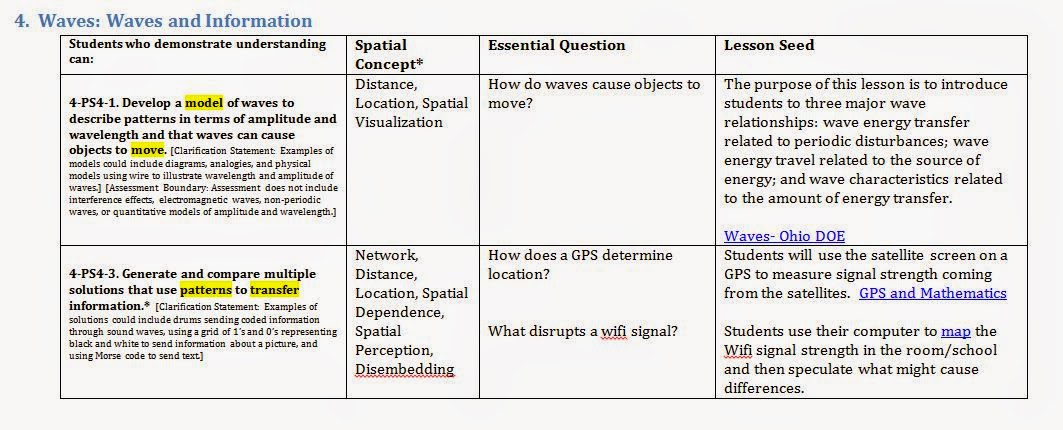Schools are closing which means curriculum development work is spooling up for the summer. Next week begins the official transition of my curriculum to the NGSS. I am excited and a little nervous. I equate it to going on vacation. You are excited to go, but worry constantly about what you forgot. Fortunately, my regiment of curriculum writers has been prepped to be flexible as we go. I have a plan, but it will undoubtedly need alterations. With that said, let me reveal my
current plan.
As stated in a previous
post I introduced you to my cracker jack transition team. They constitute the vanguard of this development process. Their mission is to take a topic page full of performance expectations (PE) and mold them into a performance based assessment scenario. These scenarios must be locally based and culturally relevant. The odd workflow, shown below, will serve as our plan of attack.
First, my thanks to Peter A'Hearn for his post in
California Science. His notion of storytellers verified the direction I wanted to go and provided the basis for my first template. The NGSS is a very different species of standard. There is a critical need to really dig deep into the NGSS documents as well as the Framework which caused them. I evolved Peter's template a little and tried my best to match the colors.
This is a very non-linear process. The storyline and driving question will actually come last, sort of. A table like the one shown above has been developed for each performance expectation on a topic page. I had initially thought we might need to split some of the topic pages into multiple assessments, but the K-2 pages hang well together. The one exception to this is the grade 1 page on
Waves. I find it difficult to talk about light as waves without bumping into the fact that light also acts like a particle. I know if I don't do this, I will have one of the local physicists on me. Don't laugh, I've had a Nobel Prize winner complain about my treatment of gravity at grade 2. Despite this, we will use them as is.
A couple of things about the document. First, the PE is colorized based on the three dimensions. I liked how the NGSS webpage highlights the PE by its parts and links them to the boxes. Below this are the prior knowledge (What they should know) and the terminal knowledge (What they learn next). As generalist, I find many elementary classroom teachers do not see the big picture of science and how it develops. It also emphasizes how the NGSS is developmental. . Without a firm foundation in science and engineering, students can not catch up (e.g. science has to be taught as a performance based content. Reading about science is not enough).
The colored table below that simply breaks out each dimension of the PE. Note the highlighted word in the DCI box. I am also keeping spatial connections front and center as we develop the curriculum (See the three part series on why
spatial thinking is important). The writer's job is to think divergently. Come up with as many enduring understandings and driving questions as possible with the goal of pulling all three parts together. As they do this, I am hoping their minds are whirling on possible ideas for the scenario. Cue next template.
GRASPS originated from
Understanding by Design as a Mad Libs for developing performance based assessments. Similarly, the Buck Institute for Education (BIE) has a variant called the
Tubric. Whichever one you use, the premise is to establish the parameters of the performance.
You will note that my workflow is non-linear. It was not always so. I initially had a checklist of steps, but each time I read it found myself rearranging steps. It then dawned on me that my source of consternation came from that fact that these early steps would not be linear. The premise for the scenario will evolve while the PEs are unpacked. Likewise the driving questions would need to focus on applying knowledge in order to create a solution to unit the problem.
I will let you know in a week how this step goes, before going to much further down the workflow.





























